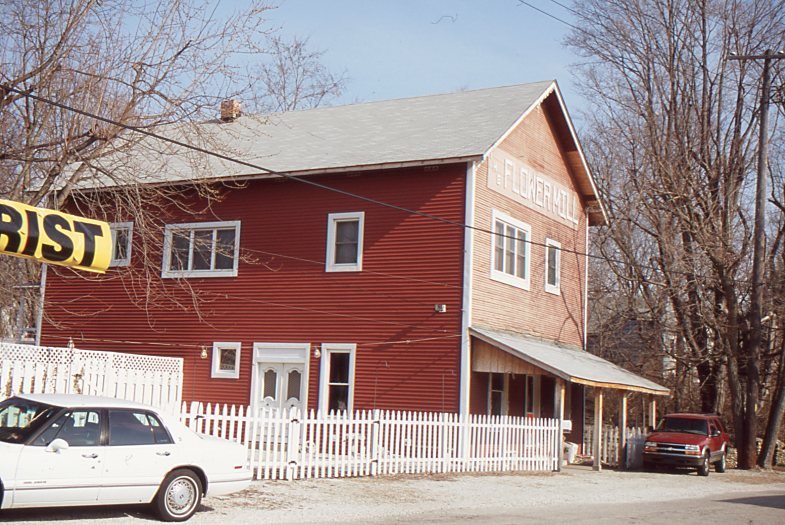17. Old Rural Towns of Marion County Provide Connection to the Past
James Glass
Column that appeared in the Indianapolis Star onIf you look on the back of the most recent Indiana state highway map, you will find a detail map of Marion County. On that map, you will find most of the county colored yellow, indicating those sections are part of the UNIGOV City of Indianapolis. In the outlying areas of the county, however, a multitude of towns and former towns are noted, including Nora, Castleton, Oaklandon, Cumberland, Acton, Wanamaker, West Newton, Camby, Bridgeport, Mars Hill, Ben Davis, Clermont, Trader’s Point, New Augusta, and Augusta. Most of these communities were founded in the nineteenth century as rural settlements, far from the hustle of the capital city. On older maps, even more such towns are shown. If you look for these communities today, you can still find many of them. Most retain some of their identity, and often, efforts are being made to preserve their heritage.
Millersville, which is not shown on the highway map, was never incorporated, but parts of it still exist just south of 56th Street and Emerson Way, on the east side. The symbol of the old community is the former general store and Masonic hall at 5422 Millersville Road, operated for the last 29 years by Sandra Whalen as the Flower Mill, a florist business. Whalen says that people stop by regularly who remember when Millersville was out in the country and talk to her about their memories. When she bought the two-story red frame building, which was constructed in 1870, there was still a hitching post for horses outside. Next door, Whalen found horse shoes around the foundation of the former blacksmith shop. A few doors north, an old frame house dating to the 1840s or 1850s once served as a tavern, where travelers on Millersville Road could stay the night and get a meal. About a block and half north, at Kessler Boulevard and Emerson Way, stands the Millersville Masonic Temple, whose members moved from their quarters over the general store in the early twentieth century and constructed the current brick Classical building. The Flower Mill and the other original buildings of Millersville are now partially hidden by retail structures on Emerson Way. But the sense of history is still strong for those who find their way to Whalen’s shop.
In Pike Township, the former town of Augusta recalls traffic on an important pioneer highway, Michigan Road, constructed by order of the Indiana General Assembly in the 1820s and 1830s to connect Indianapolis with Michigan City to the north and with Madison, Indiana to the south. The town was laid out in 1829 by David Boardman, and by 1900, a community four blocks long, including 35 houses, a church, and post office, had taken root. Today, about twelve of those houses survive, together with the Augusta Cemetery, located just east of Michigan Road on 76th Street. The oldest house in Augusta, a Federal-style brick dwelling constructed in 1834 by Boardman, has been restored by Tom Opferman for his media production business, Milestone Field and Post, Inc. Although most people today are not aware of Augusta’s history, Opferman’s house at 7716 Michigan Road is a focal point for heritage along the old highway, where a Historic Michigan Road Committee is raising awareness of historic houses between 38th and 86th Streets.
A mile west of Augusta, the former rural town of New Augusta retains its identity to a rare degree. Founded in the 1850s on the Indianapolis and Lafayette Railroad, north of what is now West 71st Street, New Augusta immerses visitors in its small-town atmosphere. At the center are two landmarks--the 1880 Salem Evangelical Lutheran Church and the 1905 former Masonic Hall. The church, founded in 1836, is a focal point for the town, with its brick walls aged to a dark brown color, Gothic design, and commanding spire. The old Masonic Hall, a two-story early concrete block structure, has been renovated by Lydia Sandlin, owner of Indiana Computer Enterprises, Inc. Sandlin has adapted the first floor, which once held the town’s general store and the New Augusta State Bank, for her firm’s needs. Upstairs, she has restored the former Masonic lodge rooms, which now house the offices of the Central Indiana Youth for Christ Campus Life organization. Sandlin says she loves the sense of community in New Augusta, the way the neighbors look out for each other, and the convenient location for reaching her customers. She also has a passion for old buildings and enjoys the sense of history in the old town.

Former Millersville Masonic Hall. James Glass, 2005
